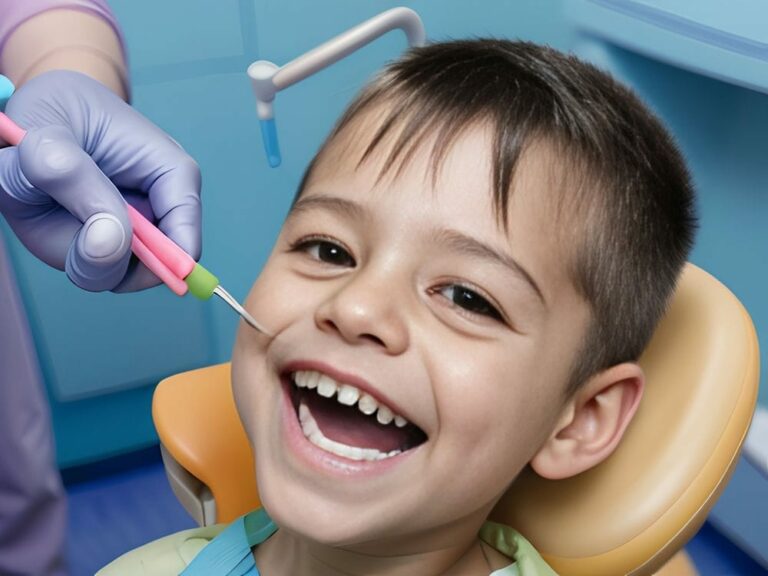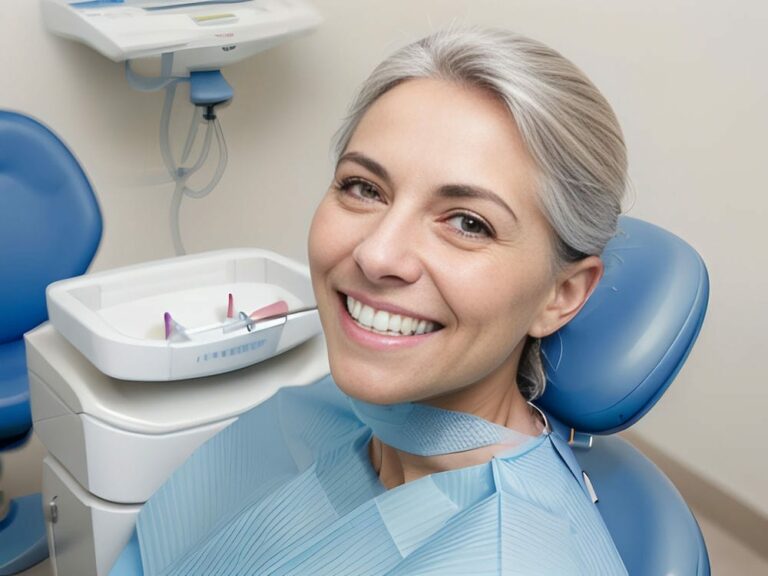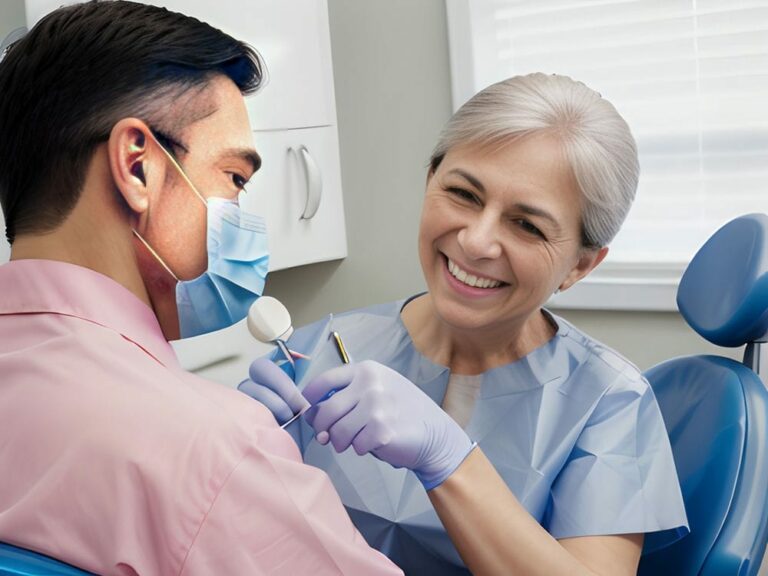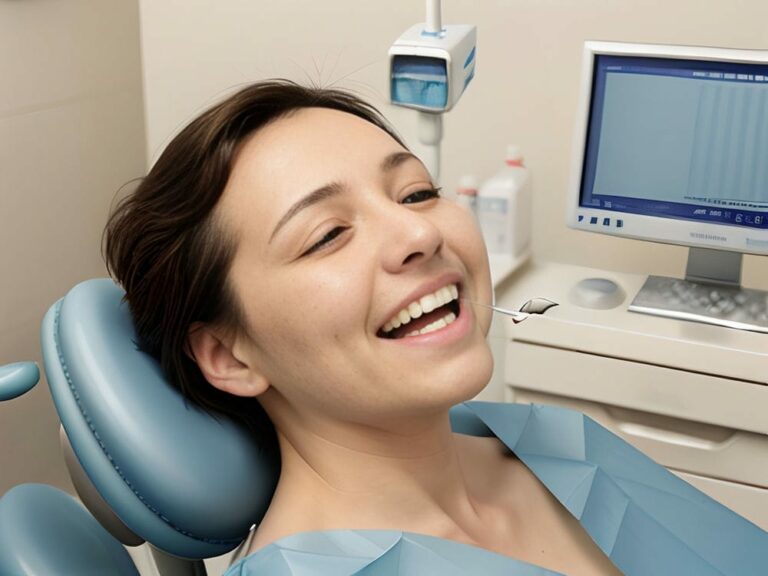The Evolution of Dentistry: Embracing Digital Technology
The Evolution of Dentistry: Embracing Digital Technology
Over the years, dentistry has undergone a remarkable transformation thanks to advancements in digital technology. From traditional methods to cutting-edge techniques, dental practices have embraced the digital revolution to enhance patient care and streamline processes. This shift towards digital dentistry has not only improved accuracy and efficiency but also opened up new possibilities for treatment planning and communication.
One of the key aspects of this evolution is the use of computer-aided design (CAD) and computer-aided manufacturing (CAM) technologies in dentistry. With CAD/CAM systems, dental professionals can create precise 3D models of patients’ teeth and gums, allowing for more accurate diagnoses and treatment plans. These systems also enable the creation of custom-made restorations, such as crowns, bridges, and veneers, which can be milled in-office using CAM technology. This eliminates the need for messy impressions and reduces turnaround time for patients.
Furthermore, augmented reality (AR) has emerged as a powerful tool in dental practices. AR allows dentists to overlay virtual images onto real-world environments, providing an interactive and immersive experience for both practitioners and patients. This technology can be utilized for treatment simulations, enabling patients to visualize potential outcomes before undergoing any procedures. Additionally, AR can assist dentists during complex surgeries by providing real-time guidance and enhancing precision.
In embracing digital technology, dentistry has witnessed a significant transformation that benefits both practitioners and patients alike. The integration of CAD/CAM systems has revolutionized treatment planning by offering precise 3D modeling capabilities and custom-made restorations. Augmented reality further enhances patient experiences by allowing them to visualize potential outcomes and aiding dentists during procedures. As we delve deeper into this guide on navigating the shift to digital dentistry practices, we will explore these advancements in greater detail while highlighting their impact on modern-day oral healthcare.
Exploring the Latest Dental Innovations and Technological Advancements
The shift to digital dentistry practices has brought about a wave of innovations and technological advancements that are transforming the field. One significant development is the introduction of dental software, which has revolutionized the way dentists manage patient records, treatment plans, and communication. With digital software solutions, dental professionals can access patient information instantly, streamline administrative tasks, and communicate seamlessly with other healthcare providers. This not only enhances efficiency but also improves overall patient care by ensuring accurate and up-to-date information.
Another breakthrough in digital dentistry is the advent of digital dentures. Traditionally, creating dentures involved multiple appointments, messy impressions, and long turnaround times. However, with digital technology, the process has become more streamlined and precise. Digital scanners can capture detailed 3D images of patients’ mouths, eliminating the need for physical impressions. These scans are then used to design and fabricate custom-fit dentures using computer-aided manufacturing techniques. The result is a more comfortable and natural-looking set of dentures in a shorter amount of time.
Digital impressions have also transformed the way dental professionals take molds of patients’ teeth. Instead of using traditional putty-like materials to create physical impressions that can be uncomfortable for patients, digital scanners capture highly accurate 3D images of the teeth and gums in a matter of minutes. These digital impressions can be instantly shared with labs or used for treatment planning purposes. Not only do digital impressions improve patient comfort and reduce chair time, but they also provide more precise results for better-fitting restorations.
The advancements in dental software, digital dentures, and digital impressions are just a few examples of how technology is shaping modern-day oral healthcare. These innovations have not only improved efficiency and accuracy but have also enhanced patient experiences by reducing discomfort and wait times. As technology continues to evolve at a rapid pace, it will be exciting to see how further developments in digital dentistry will revolutionize the field even more, ultimately leading to better oral health outcomes for patients worldwide.
Enhancing Precision and Efficiency with Digital Imaging in Dentistry
Digital dentistry practices have not only brought about advancements in dental software and denture fabrication but have also revolutionized the way dental imaging is done. One significant development in this area is the use of digital imaging techniques, which enhance precision and efficiency in diagnosing and treating oral health issues.
With the advent of digital imaging technologies such as cone beam computed tomography (CBCT) and intraoral scanners, dentists can obtain highly detailed 3D images of patients’ teeth, jaws, and surrounding structures. These images provide a comprehensive view that aids in accurate diagnosis, treatment planning, and evaluation of treatment outcomes. The use of digital imaging also eliminates the need for traditional film-based X-rays, reducing radiation exposure for both patients and dental professionals.
In addition to improving diagnostic capabilities, digital imaging plays a crucial role in dental robotics and teledentistry. Dental robotics involves the use of robotic systems to perform surgical procedures with high precision and minimal invasiveness. Digital imaging provides real-time guidance during these procedures, enabling dentists to navigate complex anatomical structures more safely and efficiently.
Furthermore, digital imaging has facilitated the growth of teledentistry, which allows remote consultations between dental professionals and patients. Through cloud-based dentistry platforms, dentists can securely share patient images with specialists for expert opinions or offer virtual consultations to patients who may not have easy access to dental care. This technology-driven approach expands access to oral healthcare services while minimizing travel time and costs for patients.
The advancements in digital imaging have transformed various aspects of modern-day dentistry by enhancing precision, efficiency, and accessibility. By leveraging cutting-edge technologies such as CBCT scanners and intraoral cameras, dental professionals can improve diagnosis accuracy, streamline treatment planning processes, perform robot-assisted surgeries with greater precision, and provide remote consultations through teledentistry platforms. With continued innovation in this field, we can expect even more exciting possibilities for the future of oral healthcare.
Revolutionizing Restorative Dentistry with CAD/CAM Systems
Digital dentistry practices have not only brought about advancements in dental software and denture fabrication but have also revolutionized the way dental imaging is done. One significant development in this area is the use of digital imaging techniques, which enhance precision and efficiency in diagnosing and treating oral health issues.
With the advent of digital imaging technologies such as cone beam computed tomography (CBCT) and intraoral scanners, dentists can obtain highly detailed 3D images of patients’ teeth, jaws, and surrounding structures. These images provide a comprehensive view that aids in accurate diagnosis, treatment planning, and evaluation of treatment outcomes. The use of digital imaging also eliminates the need for traditional film-based X-rays, reducing radiation exposure for both patients and dental professionals.
In addition to improving diagnostic capabilities, digital imaging plays a crucial role in dental robotics and teledentistry. Dental robotics involves the use of robotic systems to perform surgical procedures with high precision and minimal invasiveness. Digital imaging provides real-time guidance during these procedures, enabling dentists to navigate complex anatomical structures more safely and efficiently.
Furthermore, digital imaging has facilitated the growth of teledentistry, which allows remote consultations between dental professionals and patients. Through cloud-based dentistry platforms, dentists can securely share patient images with specialists for expert opinions or offer virtual consultations to patients who may not have easy access to dental care. This technology-driven approach expands access to oral healthcare services while minimizing travel time and costs for patients.
The advancements in digital imaging have transformed various aspects of modern-day dentistry by enhancing precision, efficiency, and accessibility. By leveraging cutting-edge technologies such as CBCT scanners and intraoral cameras, dental professionals can improve diagnosis accuracy, streamline treatment planning processes, perform robot-assisted surgeries with greater precision, and provide remote consultations through teledentistry platforms. With continued innovation in this field, we can expect even more exciting possibilities for the future of oral healthcare.
How Intraoral Scanners Are Transforming Dental Practices
Digital dentistry practices have revolutionized the field of dentistry in numerous ways. One notable area of advancement is in digital imaging techniques, which have greatly enhanced precision and efficiency in diagnosing and treating oral health issues. With the use of technologies like cone beam computed tomography (CBCT) and intraoral scanners, dentists can now obtain highly detailed 3D images of patients’ teeth, jaws, and surrounding structures. These images provide a comprehensive view that aids in accurate diagnosis, treatment planning, and evaluation of treatment outcomes.
The adoption of digital imaging has not only improved diagnostic capabilities but has also transformed dental practices in other areas. For instance, it has played a crucial role in digital treatment planning by providing dental professionals with a more precise understanding of each patient’s unique oral anatomy. This enables them to create personalized treatment plans that are tailored to each individual’s needs. Additionally, the use of digital patient records allows for seamless communication between different dental professionals involved in a patient’s care, ensuring continuity and accuracy throughout the treatment process.
Another significant impact of digital imaging is seen in remote dental consultations through teledentistry platforms. Through cloud-based dentistry platforms, dentists can securely share patient images with specialists for expert opinions or offer virtual consultations to patients who may not have easy access to dental care. This technology-driven approach expands access to oral healthcare services while minimizing travel time and costs for patients.
The advancements in digital imaging have brought about tremendous benefits to both dentists and patients alike. By leveraging cutting-edge technologies like CBCT scanners and intraoral cameras, dental professionals can improve diagnosis accuracy, streamline treatment planning processes, maintain accurate patient records, and provide remote consultations through teledentistry platforms. As this field continues to innovate, we can expect even more exciting possibilities for the future of oral healthcare without the need for traditional film-based X-rays or physical appointments at the dentist’s office.
Unleashing the Potential of 3D Printing in Dentistry
As digital dentistry continues to evolve, another groundbreaking technology that is transforming dental practices is 3D printing. With the ability to create customized dental appliances, such as crowns, bridges, and aligners, 3D printing offers numerous advantages over traditional methods of fabrication.
One significant benefit of 3D printing in dentistry is the improved accuracy and precision it provides. By using digital scans of a patient’s teeth and gums, dentists can create highly accurate models for designing and fabricating dental restorations. This eliminates the need for messy and time-consuming traditional impressions and ensures a better fit for patients.
Additionally, 3D printing allows for greater efficiency in producing dental appliances. With traditional methods, creating custom-made restorations can take several weeks or even months. However, with 3D printing technology, dentists can produce these appliances in a matter of hours or days, significantly reducing turnaround times and improving patient satisfaction.
Furthermore, the integration of artificial intelligence (AI) in dentistry has further enhanced the capabilities of 3D printing. AI algorithms can analyze digital scans and assist in designing optimal restorations based on specific patient needs. This combination of AI and 3D printing not only improves efficiency but also enhances treatment outcomes by ensuring precise fit and functionality.
In conclusion, the utilization of 3D printing technology in dentistry has revolutionized the way dental appliances are fabricated. With its enhanced accuracy, efficiency, and integration with artificial intelligence, dentists can provide more customized treatments while minimizing turnaround times. As digital dentistry practices continue to advance alongside telemedicine platforms and digital practice management systems, we can expect further improvements in oral healthcare delivery for both patients and dental professionals.
Streamlining Workflows with Digital Workflow Solutions
Digital workflow solutions have become an integral part of modern dental practices, streamlining various processes and improving overall efficiency. One key aspect of these solutions is patient communication software, which allows dentists to easily communicate with their patients and provide updates on treatment plans, appointment reminders, and post-operative instructions. This technology eliminates the need for traditional phone calls or in-person visits, saving time for both the dentist and the patient.
In addition to enhancing patient communication, digital workflow solutions also play a crucial role in dental education. With access to online platforms and resources, dentists can stay up-to-date with the latest advancements in their field and participate in continuing education courses without having to travel or attend physical conferences. These digital platforms offer convenience and flexibility, enabling dental professionals to expand their knowledge base and improve their clinical skills.
Furthermore, digital workflow solutions help streamline administrative tasks within dental practices. By digitizing appointment scheduling, billing processes, and record keeping, dentists can reduce paperwork and save valuable time. This automation not only increases productivity but also improves accuracy by minimizing errors that are commonly associated with manual data entry.
By embracing digital workflow solutions, dental practices can revolutionize the way they operate. From improving patient communication through software platforms to accessing digital dental education resources online, these technological advancements enhance efficiency while reducing administrative burdens. As dentistry continues its shift towards a more digital future, it is essential for practitioners to embrace these tools to provide optimal care for their patients.
Exploring the Promising Applications of Virtual Reality in Dentistry
The shift to digital dentistry practices has brought about numerous advancements that have greatly improved the efficiency and effectiveness of dental procedures. One promising application of digital technology in dentistry is the use of virtual reality (VR). VR has the potential to revolutionize dental education, treatment planning, and patient experience.
Firstly, VR offers a unique and immersive learning environment for dental students and professionals. Through realistic simulations, dentists can practice various procedures and techniques in a safe and controlled setting. This not only enhances their clinical skills but also reduces the need for costly and time-consuming hands-on training. Additionally, VR can be used for collaborative learning, allowing dental teams to work together remotely on complex cases.
Secondly, VR can be utilized in treatment planning to provide patients with a visual representation of their proposed dental treatments. By using 3D models and simulations, dentists can show patients how their smile will look after different procedures such as orthodontics or cosmetic dentistry. This helps patients make informed decisions about their treatment options and increases their confidence in the outcome.
Lastly, VR can significantly improve the patient experience during dental procedures. By creating a virtual environment that distracts patients from pain or anxiety, VR technology can help reduce discomfort and fear associated with dental visits. Patients can choose from a variety of virtual experiences such as relaxing beach scenes or engaging games to make their appointment more enjoyable.
Incorporating virtual reality into digital dentistry practices has the potential to transform how dental professionals learn, plan treatments, and care for their patients. As this technology continues to evolve, it is important for dentists to embrace these advancements to provide the highest quality of care while enhancing patient satisfaction.
Overcoming Challenges and Embracing a Digital Dentistry Future
The shift to digital dentistry practices has brought about numerous advancements that have greatly improved the efficiency and effectiveness of dental procedures. One promising application of digital technology in dentistry is the use of virtual reality (VR). VR has the potential to revolutionize dental education, treatment planning, and patient experience.
Firstly, VR offers a unique and immersive learning environment for dental students and professionals. Through realistic simulations, dentists can practice various procedures and techniques in a safe and controlled setting. This not only enhances their clinical skills but also reduces the need for costly and time-consuming hands-on training. Additionally, VR can be used for collaborative learning, allowing dental teams to work together remotely on complex cases.
Secondly, VR can be utilized in treatment planning to provide patients with a visual representation of their proposed dental treatments. By using 3D models and simulations, dentists can show patients how their smile will look after different procedures such as orthodontics or cosmetic dentistry. This helps patients make informed decisions about their treatment options and increases their confidence in the outcome.
Lastly, VR can significantly improve the patient experience during dental procedures. By creating a virtual environment that distracts patients from pain or anxiety, VR technology can help reduce discomfort and fear associated with dental visits. Patients can choose from a variety of virtual experiences such as relaxing beach scenes or engaging games to make their appointment more enjoyable.
Incorporating virtual reality into digital dentistry practices has the potential to transform how dental professionals learn, plan treatments, and care for their patients. As this technology continues to evolve, it is important for dentists to embrace these advancements to provide the highest quality of care while enhancing patient satisfaction.
The Roadmap to Successfully Transitioning to Digital Dentistry Practices
The shift to digital dentistry practices can be a daunting task for dental professionals, but with careful planning and preparation, it can be a smooth transition. Here is a roadmap to help navigate the journey towards digital dentistry practices.
Firstly, it is important to assess the current workflow and identify areas where digital technology can be integrated. This may involve evaluating current systems and equipment, as well as determining the specific needs and goals of the practice. By understanding what needs to be improved or replaced, dental professionals can make informed decisions about which digital tools and technologies are most suitable for their practice.
Once the necessary digital tools have been identified, it is crucial to invest in quality equipment and software. This includes acquiring digital imaging systems, CAD/CAM technology, and electronic health records (EHR) software. It is important to research different options and choose those that best fit the needs of the practice in terms of functionality, ease of use, and compatibility with existing systems.
After acquiring the necessary equipment and software, training becomes essential to ensure smooth integration into daily workflows. Dental professionals should take advantage of training programs offered by manufacturers or industry associations to become proficient in using these new technologies. This will not only enhance their skills but also increase efficiency and accuracy in delivering patient care.
Incorporating digital dentistry practices requires careful planning, investment in quality equipment and software, as well as comprehensive training. By following this roadmap, dental professionals can successfully transition to a digital workflow that improves efficiency, accuracy, and patient satisfaction without sacrificing quality of care.
FAQs
Q: What is digital dentistry?,
A: Digital dentistry refers to the use of digital technologies and tools in dental practices for diagnosis, treatment planning, and various dental procedures.,
Q: How does digital dentistry benefit patients?,
A: Digital dentistry offers several benefits to patients, including improved accuracy in diagnosis and treatment planning, reduced chair time, enhanced aesthetics, and better overall patient experience.,
Q: What are some common digital tools used in dentistry?,
A: Some common digital tools used in dentistry include intraoral scanners, digital X-rays, computer-aided design and computer-aided manufacturing (CAD/CAM) systems, and 3D printers.,
Q: How does digital dentistry improve accuracy in dental procedures?,
A: Digital dentistry allows for precise measurements, virtual treatment planning, and the ability to create digital models of the patient’s teeth, resulting in improved accuracy during procedures such as crown placements, orthodontic treatments, and implant surgeries.,
Q: Can digital dentistry help in creating dental restorations?,
A: Yes, digital dentistry plays a crucial role in creating dental restorations. It enables the dentist to design and fabricate crowns, bridges, veneers, and other restorations using computer-aided design and computer-aided manufacturing (CAD/CAM) systems.,
Q: Is digital dentistry cost-effective?,
A: While the initial investment in digital dentistry equipment may be higher, it can lead to long-term cost savings due to reduced chair time, fewer remakes of restorations, and the ability to streamline workflows and increase efficiency.,
Q: Are digital X-rays safer than traditional X-rays?,
A: Yes, digital X-rays are generally considered safer than traditional X-rays. They require less radiation exposure, provide instant results, and allow for easy storage and sharing of patient records.,
Q: Can digital dentistry improve patient communication?,
A: Absolutely, digital dentistry enhances patient communication by allowing dentists to visually show patients their dental conditions, treatment options, and expected outcomes using digital images, 3D models, and simulations.,
Q: How does digital dentistry contribute to better aesthetics in dentistry?,
A: Digital dentistry enables dentists to create highly accurate and precise dental restorations, resulting in improved aesthetics. It allows for customized color matching, natural-looking tooth shapes, and better overall esthetics.,
Q: Is digital dentistry the future of dentistry?,
A: Yes, digital dentistry is considered the future of dentistry. With advancements in technology and increasing adoption rates, it is expected to revolutionize dental practices and become the standard of care in the coming years.




















